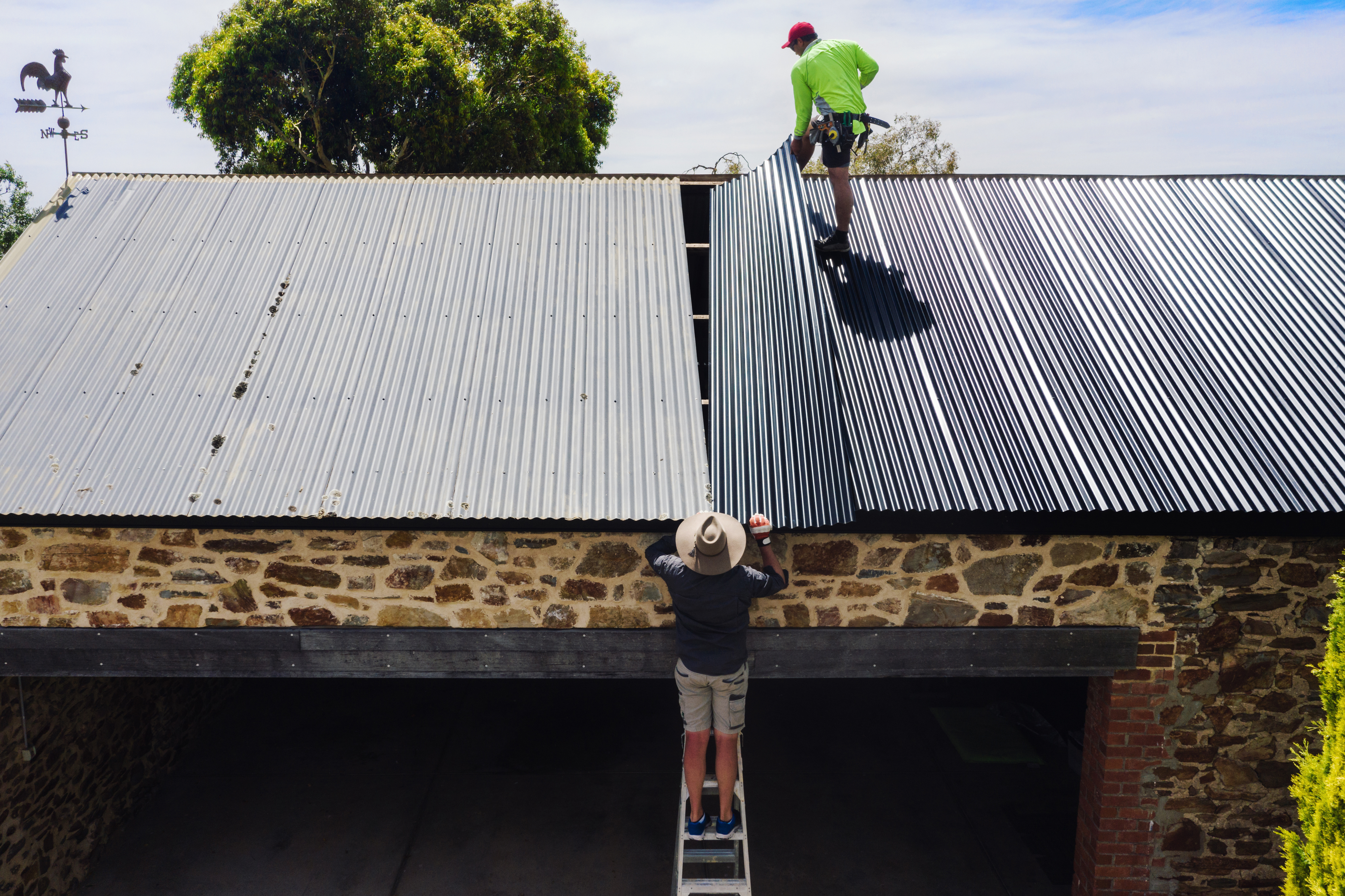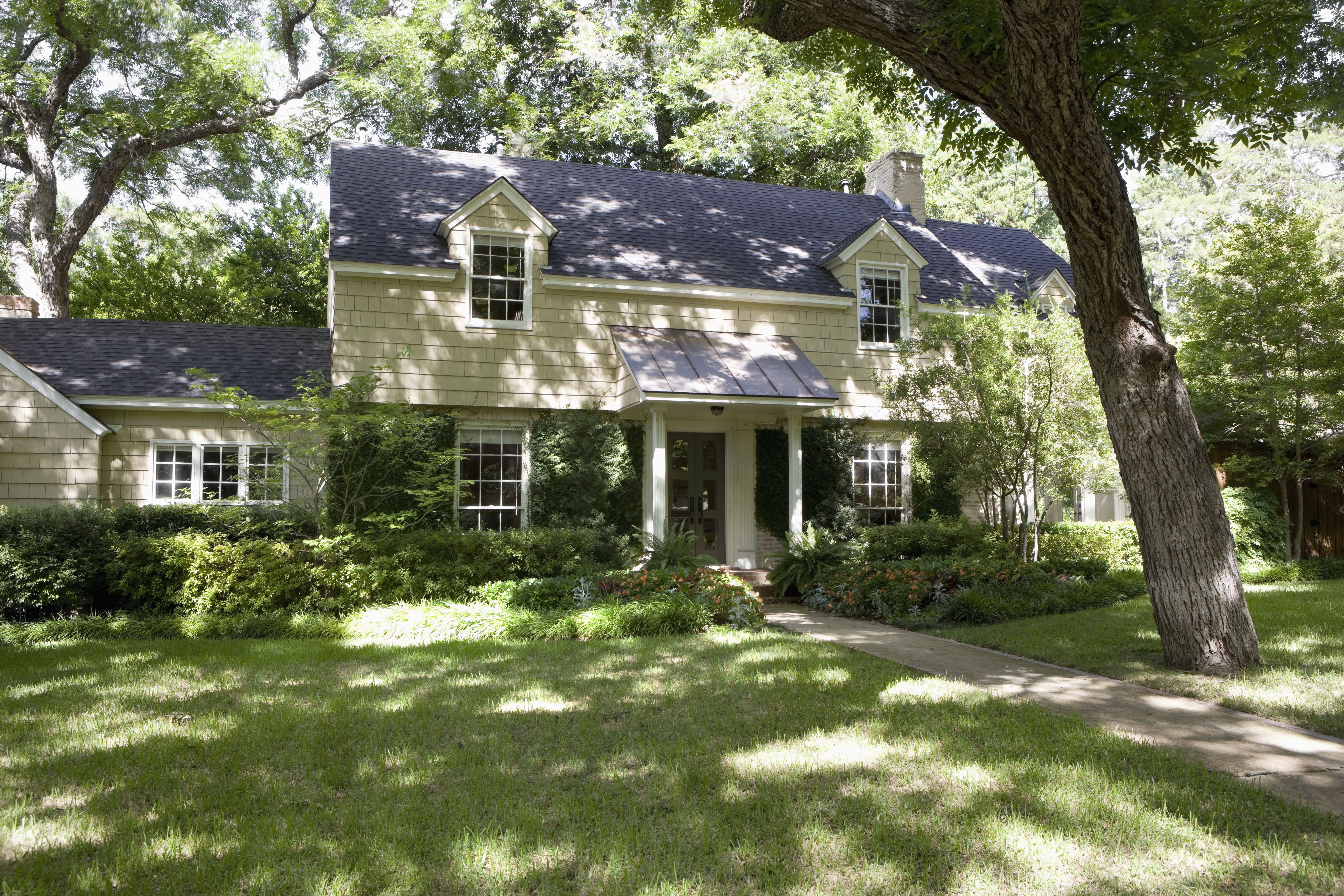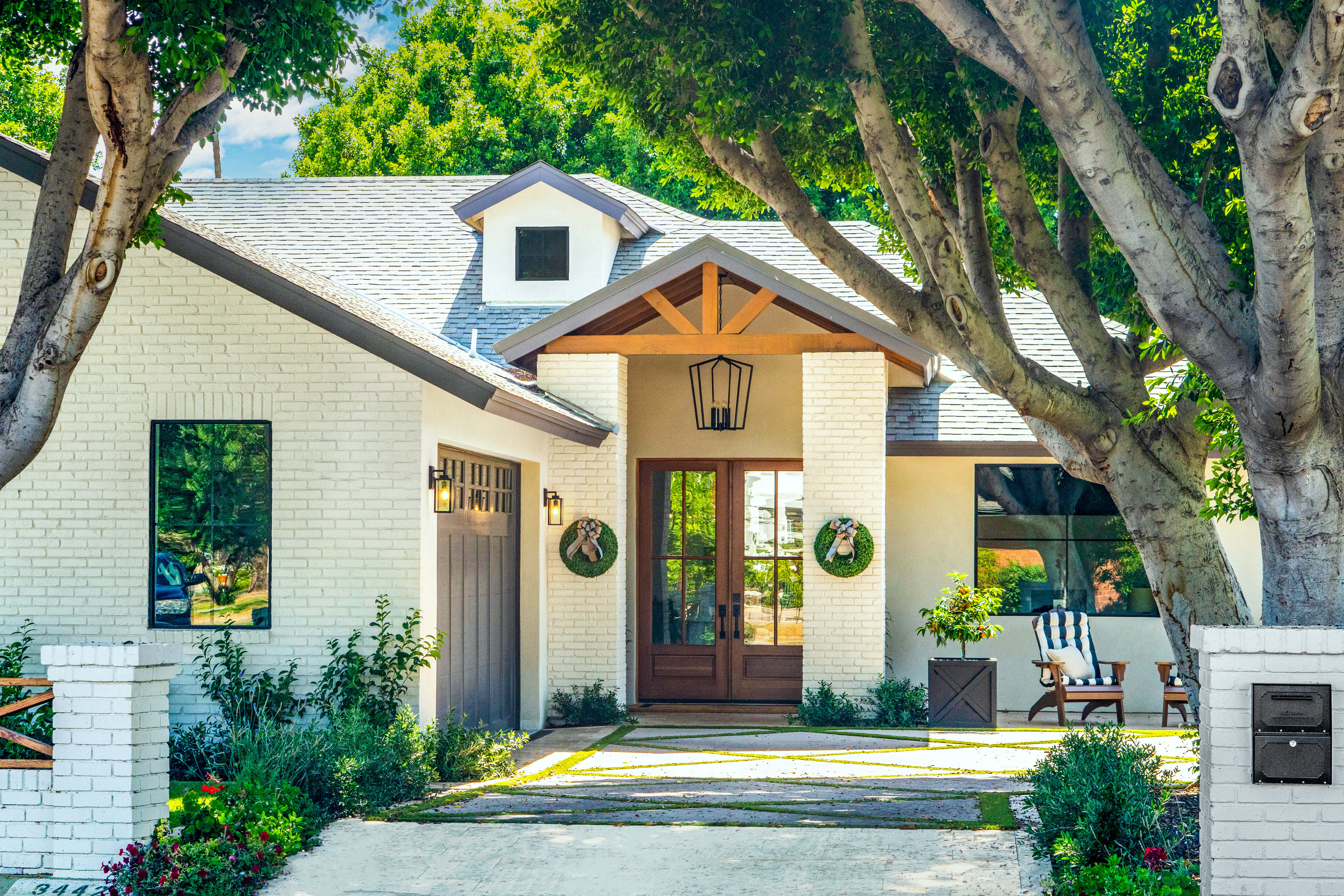
Learn about metal roof costs in Dallas and what factors affect pricing to get an idea of how much you should budget for your roof project.
Sometimes, replacing a single shingle is all it takes


This project can be costly in more ways than one. Hire a pro to get the job done right the first time, avoid potential injury, and eliminate budget-breaking DIY mistakes.
If a nasty storm recently passed and you’ve spotted damage to some of the shingles on your roof, don’t panic. Fortunately, the job likely won’t require you to replace your roof, and if you know how to replace damaged roof shingles yourself, you might be able to get the job done for under $100. Let’s go over the steps you’ll need to take to get your home protected again.
The most commonly sought-after asphalt shingle roof repair involves fixing water leaks. Homeowners also want recommendations from a roofer for repairs that prevent damage and keep their roofs in good condition. Other issues include broken, missing, cracked, and loose shingles, water stains, and other related problems.
Before replacing damaged shingles, you need to know the extent of the problem so you can decide whether to buy replacement materials and tackle the job on your own or hire a roofing company near you to carry out a full roof replacement or install new shingles over the old ones as a fix for leaks and damages.
Situations that warrant small-scale repairs include the following:
High winds that knocked a small number of shingles off
Visible cracks or punctures from blown debris or fallen tree branches
Shingles that are hanging off your roof or curled back
For more extensive damage, especially if the roof damage has led to signs of a roof leak inside, hire a roofer instead.
You can inspect your roof without climbing on it by using a ladder and scanning the slopes. If you do, in fact, have damaged shingles, prepare to make repairs quickly. The dangers of a leaky roof can be costly if left unresolved.

Once you’ve identified the roof area that needs repairing, check to see whether you have replacement shingles at home before buying new ones. When professional roofers install new roofs, they often leave behind extra shingles that match for minor repairs in the future. Check your basement, garage, or other storage areas to find leftover shingles from your roofing contractor.
If not, home improvement stores and lumber centers carry replacement asphalt shingles. They cost an average of $40 to $45 per bundle, which should be plenty for minor damages.
If you need a specific type of shingle for your roof or it’s more than a few years old, you may have difficulty ordering shingles that perfectly match the current ones. If you live in a sunny area, the sun will bleach your shingles over time, causing the color to change, meaning the new ones may not match perfectly. Similarly, if your roof has algae stains, the new unstained shingles will stand out among the rest. Copper roof strips can help avoid damage from algae and are a good investment if your roof is heavily shaded.
If you’re having trouble matching shingles, consider uninstalling shingles from one of the less visible parts of your roof (the back or near the chimney, for example) and moving them into the more visible area. Then, you can install the new shingles that are slightly off-color in the less-visible area. Keep in mind that this process will add at least an hour or two to your project time.

Before getting on the roof to make the repair, ensure that you take safety precautions when climbing on a ladder to access your roof. Make sure your ladder is secure, and have someone at the base to help assist you.
To get to the damaged shingles, you first need to remove any overlapping roofing material. Doing so prevents damage to any intact shingles. Use a shingle pry bar to carefully raise up and remove the surrounding shingles. Be sure to remove the nails attached to the shingles, too.
Put them in a safe space before you proceed. It's also a good idea to use a magnet to make sure you've picked up any stray nails.
Since you’ve previously pried up the overlapping shingles, you can now remove the damaged shingles.
Slide your flat pry bar underneath the damaged shingle and run it along the edge. This method should break the glue seal holding the shingle down. Complete this process gently and slowly so you don't tear any of the shingles you’re not planning to replace.
Then, locate the nail underneath the broken shingle. Use the same flat pry bar to pull the nail up and out, then slide the damaged shingle free. If you can’t pull the shingle free after removing the nail, you may have to take the nail out from the shingle directly above it, too.
Be careful not to damage any functioning shingles surrounding the broken one. If you do, you’ll also need to replace them.

After pulling out the damaged roof shingles, set them aside or drop them on the ground if it’s safe to do so. To install a new shingle, slide it into the open space left by the old shingle. You’ll need to hammer in four roofing nails to secure each new full shingle.
Remember that you always need to layer asphalt shingles on top of each other to prevent leaks. Any shingle you replace should always sit beneath the one above it and overlap the one below it. You should cover all nails in the shingle below the one you’re replacing and ensure that the bottom edge of the shingle doesn’t have any nails in it.
If you removed the nails on an undamaged shingle while extracting the old shingle, replace that nail before proceeding to the final step. At this point, you should ensure that all of the shingles in the repair zone are nailed down and secure.
Keep in mind, you should never "face nail" a shingle where it will be exposed to the elements—meaning the nail isn’t covered by the shingle above it. But if you must nail a shingle (for instance, if an old roof is so brittle that you can’t find a good stopping point because each shingle you pull up keeps taking up the next one), put roofing cement on the exposed nail to seal it.
Lay a bead of roof sealant along the glue strip at the base of your new shingle. Firmly press it onto the shingle below to seal it. Applying sealant to any areas where you broke the original seal is important because the old sealant will likely never “reseal” again. Putting a dab of sealant in these areas will ensure that the next wind storm doesn’t tear off your new handiwork.
Replacing damaged asphalt shingles is no easy feat, but you can make your job a bit simpler and help reduce the risk of future damages and leaks by avoiding the following common mistakes.
Not removing old roofing nails: Any nail heads that poke out of the roof decking from the old shingle can push through your new shingle and increase the risk of leaks. Always be diligent about removing old nails before replacing shingles.
Failing to seal exposed nail heads: In some cases, you’ll need to nail directly through a shingle that will remain exposed. You should avoid doing this whenever possible, but if you must, always seal the nail head with roofing cement.
Not layering the shingles properly: Always remember that a shingle should overlap the one below it, and the top should sit under the one above it. This provides a safe route for runoff to flow for proper disposal.
Working in inclement weather: It might be tempting to get on your roof at the first sign of damaged shingles, but wait until the storm passes to keep yourself safe. If you need to stop an active roof leak, call a roof tarping company for emergency service and tackle repairs later once the bad weather has passed.
Repairing your roof yourself can be a budget-friendly option if you have prior roofing experience, and it will save you an average of $600 on the cost of roof repairs.
However, while the DIY approach is a good way to keep your roof repair costs down, it's not the best approach from a safety point of view. Roof repairs can be dangerous and require proper equipment to reduce the risk of falls and protect you if you should slip. There's also the risk of replacing the shingles incorrectly, potentially making a small problem much worse and causing more expensive damage to your home.
Instead, hiring a local roofing contractor will be your best bet. A roofing professional will know what type of shingles you have and can complete the repair properly to avoid ongoing leaks and roof issues. While the cost of roof repairs averages $1,200, the peace of mind of knowing your roof is repaired correctly (and safely) is invaluable.
From average costs to expert advice, get all the answers you need to get your job done.

Learn about metal roof costs in Dallas and what factors affect pricing to get an idea of how much you should budget for your roof project.

Roof replacement costs in Dallas depend on roof size, material, and more. Find out how much roof replacement costs in Dallas and what affects the final price.

Roof repair costs in Dallas vary based on the type and extent of the damage and your roofing material. Learn how much roof repair costs in Dallas with our guide.

Painting a metal roof helps it look great and last for decades. Use this guide to learn how to paint a metal roof, whether you DIY the job or hire a pro.

Discover the cost to paint a metal roof, including average prices, key cost factors, and tips to help you budget and save on your next roofing project.

Most roofing professionals are hardworking and ethical, but there are a few bad apples to watch out for. Learn how to avoid the 12 most common roofing scams.